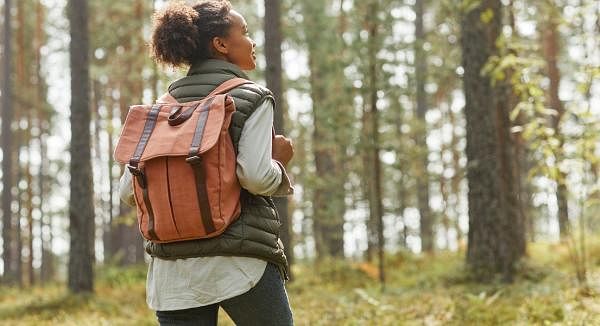Are You Protecting Your Bones During The Menopause?
Why you can trust Nutri Advanced Every article on our site is researched thoroughly by our team of highly qualified nutritionists. Find out more about our editorial process.
Rather than being the unchangeable solid mass that it was once thought to be, bone is a dynamic tissue which is sensitive to hormones, insulin, stress and inflammation. It is still true that for most individuals they reach a peak bone mass in their early adulthood but this doesn’t mean there is nothing we can do once we are older. However, it is well documented that after menopause women are vulnerable to weaker bones due to the lack of protection from good levels of oestrogen. Supporting menopause and bone health with specific women's supplements and menopause supplements is worth considering as part of a daily routine.
Menopause accelerates bone loss
Worldwide, 1 in 3 women over age 50 will experience osteoporotic fractures.1 Furthermore, a new analysis of the Women’s Health Initiative revealed that there is an increased risk of fracture among women who had menopause at age 40 or earlier regardless as to whether they underwent HRT and vitamin D and calcium supplementation in their 50s-60s. This suggests that early menopause is also an independent risk factor of osteoporosis.3 Overall a woman’s risk of breaking a hip is equal to her combined risk of breast, uterine and ovarian cancer.2
Lara Pizzorno, internationally renowned bone health expert and author of ‘Your Bones – How you can prevent Osteoporosis and have strong bones for life – naturally’, writes,
“The conservative (least) expected drop in bone mineral density for women aged 41-55 is a loss of -0.5% / year, for women 56 and older, a loss of -1.0% / year, and for men a loss of half these amounts. Minor bone loss starts at age 40, increasing to 0.5% to 0.9% a year in peri-menopausal women and to above 1% after menopause, after which the yearly loss in bone mineral density remains about 1%.”
The secret to good bone health after 40
In 2020, Lara Pizzorno gave a fascinating lecture on the ways to identify those at risk of bone loss, including but not limited to menopausal women, and how to increase new bone growth. You can access that lecture here. You may also be interested in the recent Nutri Advanced Bone Health Research Summary which looks at the research for different nutrients involved in bone support.
References:
1. What Women Need to Know - National Osteoporosis Foundation. National Osteoporosis Foundation. 2017. Available at: https://www.nof.org/preventing-fractures/general-facts/what-women-need-to- know/. Accessed April 13, 2017.
2. Iofbonehealth.org. (2017). Facts and Statistics | International Osteoporosis Foundation. [online] Available at: https://www.iofbonehealth.org/facts-statistics [Accessed 27 Jun. 2017].
3. Menopause October 31, 2016 Sullivan SD, Lehman A, Nathan NK, Thomson CA, Howard BV. Age of menopause and fracture risk in postmenopausal women randomized to calcium + vitamin D, hormone therapy, or the combination: results from the Women's Health Initiative Clinical Trials. Menopause. 2017 Apr;24(4):371-378. doi: 10.1097/GME.0000000000000775. PMID: 27801706; PMCID: PMC5365363.
This website and its content is copyright of Nutri Advanced ©. All rights reserved. See our terms & conditions for more detail.
Nutri Advanced has a thorough research process and for any references included, each source is scrutinised beforehand. We aim to use the highest value source where possible, referencing peer-reviewed journals and official guidelines in the first instance before alternatives. You can learn more about how we ensure our content is accurate at time of publication on our editorial policy.
Most Popular Articles
-
7 Surprising Ways To Support Your Magnesium
If you are displaying signs of a magnesium deficiency, here are 7 ways to boost your magnesium levels that are easy to incorporate into your daily life. -
5 Best Vitamin C Supplements Picked By Our Experts
Learn more about the different types of vitamin C, the different benefits you get from different types, and what you get for spending more on a good supplement. -
Top 5 Vitamins For Energy And Tiredness Picked By Our Experts
The 5 best and most important vitamins for energy & tiredness including B vitamin food sources & best supplement forms for energy. -
Benefits of Myo-Inositol for Polycystic Ovary Syndrome (PCOS)
In this research review article, we take a closer look at a lesser-known natural compound called myo-inositol that has been found to have significant potential to improve many of the prevalent features of PCOS. -
Top 10 Reasons to Give Your Kids Omega-3
Read the top 10 reasons that kids should have plenty of Omega-3- an essential fatty acid- including for depression, brain function, sleep & reading/maths skills.











